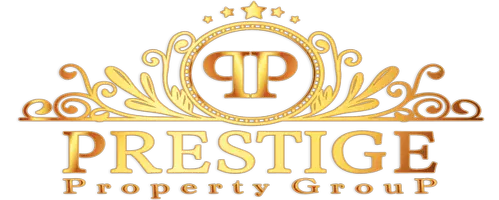Don’t Refinance Too Quickly: A Lower Rate Could Actually Cost You Thousands
Refinancing can be a tempting option when mortgage rates drop, but in truth, it’s not always the right choice.
As of Sept. 11, the 30-year mortgage rate stood at 6.35%, falling 15 basis points from the previous week and representing “the largest weekly drop in the past year,” according to Freddie Mac.
And the anticipated Federal Reserve rate cut this week could also help push mortgage rates lower, further boosting optimism for the housing market.
But while these macroeconomic conditions seem like a good time to refinance, for some homeowners, this might not pay off.
“You need to look beyond the interest rate itself to determine total costs. Refinancing means getting a whole new mortgage, which comes with all the administrative work and costs of getting a mortgage,” said Michael Micheletti, home equity expert and chief communications officer at fintech company Unlock Technologies.
“Closing costs generally range from 2% to 5% (sometimes more) of the mortgage loan amount. So you’d want to make sure you plan to stay in the house long enough for the monthly savings you gain from the refinance to cover this expense.”
Time limits and waiting periods on mortgages
Typical mortgage refinancing rules include time limits and waiting periods, which vary depending on the type of mortgage you have. If you want to refinance, this can affect your timeline, so understanding these differences is key.
For example, conventional loans usually require a six-month waiting period before refinancing. Then, for FHA loans, a streamline refinance generally requires 210 days after closing, while a cash-out refinance typically needs at least six months from the first payment. Meanwhile, to refinance a VA loan, you will have to wait 212 days after your first mortgage payment.
Sergio Altomare, co-founder and CEO of real estate private equity and development company Hearthfire Holdings, says refinancing too early can mean paying fees that outweigh any interest savings.
“The type of loan matters, and borrowers should always weigh the costs against the actual time they plan to stay in the home,” he says.
Leslie H. Tayne, finance and debt expert and founder of debt resolution law firm Tayne Law Group, echoes the sentiment, noting that if you choose to refinance, one of the most important factors to consider is the closing costs, which are typically 2% to 6% of the new loan amount.
She also urges homeowners to be careful with “no closing costs” refinance options, as lenders often roll these costs into the new loan's total sum or interest rate.
Tayne argues that it’s best to refinance when your monthly savings from attaining a lower interest rate are greater than the sum you’ll pay in closing costs. In other words, if a homeowner refinances too soon, their closing costs may be greater than the money their new, lower interest rate saves them, so it may not be financially beneficial to refinance after all, she says.
When refinancing is a bad idea, even with lower rates
Experts agree that refinancing is an unwise financial move under certain circumstances, even if all the stars seem aligned.
Break-even point
Rose Krieger, senior home loan specialist at Churchill Mortgage, explains that when refinancing, you want to factor in a break-even point, which is where you take the cost of the refinance and subtract it from your potential savings to see how many months it will take to make up that difference.
“For example, if the cost of the refinance is $10,000, and you will be saving $500 a month with the new payment, it will take you 20 months to break even,” she explains.
Short remaining loan term
Unlock’s Micheletti says that another critical factor is where you are in your loan term. When you refinance, you get a whole new mortgage and restart the “mortgage clock.”
“That means if you are 12 years into your existing mortgage term and refinance into a 30-year mortgage, it’s another 30 years to pay it off,” he says.
He adds that if you look at your amortization schedule, you’ll see that most of the interest on the mortgage loan is paid at the beginning of the term.
“If you restart with a new mortgage, you pay all that upfront interest again. The refinance could end up costing more in total interest, even if your new monthly payment is lower,” he adds.
High closing costs
Refinancing might also work against you if you're paying excessive closing costs.
“We often see online lenders advertising below-market rates, but those offers can come with excessive fees to actually secure the rate,” says Baret Kechian, branch manager at LoanDepot. “That’s why it’s so important to read the fine print and understand all the costs associated with your loan before closing.”
Cash-out refinancing risks
A cash-out refinance allows homeowners to access cash through their home equity, or the value of the home they own.
You'll be refinancing your mortgage for more than you currently owe and taking the difference in cash. Then, your new loan will be the amount you still owe on your mortgage plus the cash you wanted to take out. While these can come in handy, they also come with drawbacks.
Altomare says that cash-out refinancing can be risky if you’re stripping equity from the home without a clear investment plan for that capital.
Switching to an adjustable-rate loan
Switching from a fixed-rate to an adjustable-rate mortgage may lower the payment now but introduce long-term risk, according to Altomare.
“Even if the monthly payment looks attractive, stretching a loan back out to 30 years can mean paying far more interest over time,” he says.
Scenarios where homeowners can’t refinance, even if they wanted to
There are several instances where homeowners cannot refinance.
Altomare says that lenders may be unwilling to refinance due to poor credit, limited equity, or unstable income. He also notes that existing liens or second mortgages can complicate approval.
“Lenders have strict debt-to-income and credit standards, and without meeting those, refinancing won’t be an option regardless of the rate environment,” he adds.
On the other hand, however, homeowners who still want to refinance can take several steps to improve their eligibility in the future.
Altomare says that these steps can include improving credit scores, paying down debt, and ensuring steady income documentation.
In addition, building equity—whether through appreciation or extra principal payments—expands refinancing options.
“Cleaning up liens or resolving disputes tied to the property also clears the path. The goal is to look like a lower-risk borrower so that when rates dip, you’re in position to move quickly and capture the opportunity,” he adds.
Categories
Recent Posts










GET MORE INFORMATION

